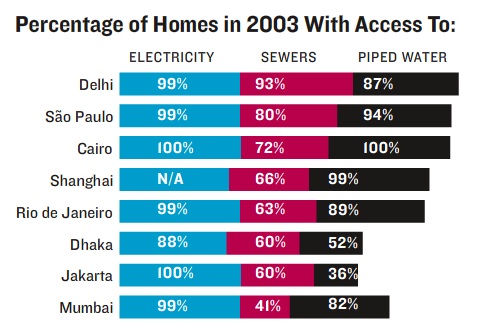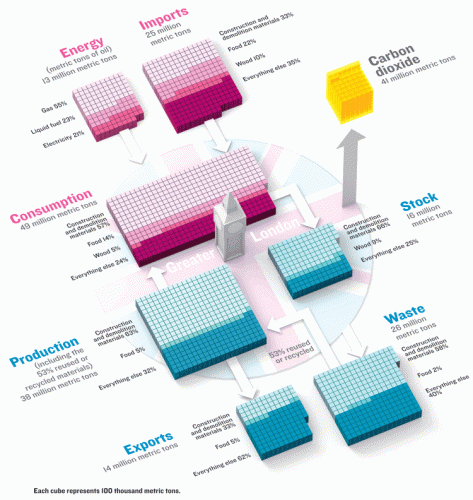Do yourself a favor: Go check out the latest issue of IEEE Spectrum, either online or in hard copy. Spectrum is the trade magazine for the international engineers' society—it's really quite good—and this issue features an extensive package on megacities.This is the engineer's take on many of the issues we all grapple with on Interchange. So it's not about making public meetings go more smoothly or trying to understand how to use GIS for placemaking. It's about building stuff and making sure it'll keep working.
 Do yourself a favor: Go check out the latest issue of IEEE Spectrum, either online or in hard copy. Spectrum is the trade magazine for the international engineers' society-it's really quite good-and this issue features an extensive package on megacities.
Do yourself a favor: Go check out the latest issue of IEEE Spectrum, either online or in hard copy. Spectrum is the trade magazine for the international engineers' society-it's really quite good-and this issue features an extensive package on megacities.
This is the engineer's take on many of the issues we all grapple with on Interchange. So it's not about making public meetings go more smoothly or trying to understand how to use GIS for placemaking. It's about building stuff and making sure it'll keep working.
There's too much in the issue to pick out one or two things to link to. Great stuff on electrical infrastructure, earthquake preparedness, surveillance, terrific (and terrifically useful) statistics...hoo, boy. I haven't even made it half way through, and I'm psyched.
I'll leave off, then, with this wonderful chart showing the ecological footprint-all the inputs and outputs-of greater London. And check out the way the writer, Samuel K. Moore, tees it up:
Greater London, like all metropolitan areas, is a living thing. Each year it eats-7 million metric tons of food. It drinks-94 million liters of bottled water alone. It breathes-giving off 41 million metric tons of carbon dioxide. It excretes-generating 26 million metric tons of garbage. It builds itself up with 28million metric tons of cement, glass, and other construction materials. And it falls apart, generating 15 million metric tons of debris from demolished buildings.


Planetizen Federal Action Tracker
A weekly monitor of how Trump’s orders and actions are impacting planners and planning in America.

Map: Where Senate Republicans Want to Sell Your Public Lands
For public land advocates, the Senate Republicans’ proposal to sell millions of acres of public land in the West is “the biggest fight of their careers.”

Restaurant Patios Were a Pandemic Win — Why Were They so Hard to Keep?
Social distancing requirements and changes in travel patterns prompted cities to pilot new uses for street and sidewalk space. Then it got complicated.

Platform Pilsner: Vancouver Transit Agency Releases... a Beer?
TransLink will receive a portion of every sale of the four-pack.

Toronto Weighs Cheaper Transit, Parking Hikes for Major Events
Special event rates would take effect during large festivals, sports games and concerts to ‘discourage driving, manage congestion and free up space for transit.”

Berlin to Consider Car-Free Zone Larger Than Manhattan
The area bound by the 22-mile Ringbahn would still allow 12 uses of a private automobile per year per person, and several other exemptions.
Urban Design for Planners 1: Software Tools
This six-course series explores essential urban design concepts using open source software and equips planners with the tools they need to participate fully in the urban design process.
Planning for Universal Design
Learn the tools for implementing Universal Design in planning regulations.
Heyer Gruel & Associates PA
JM Goldson LLC
Custer County Colorado
City of Camden Redevelopment Agency
City of Astoria
Transportation Research & Education Center (TREC) at Portland State University
Camden Redevelopment Agency
City of Claremont
Municipality of Princeton (NJ)


























